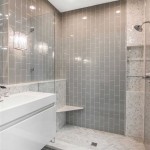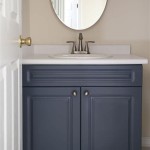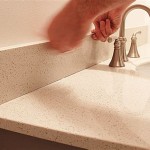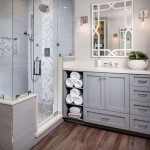Bathroom Sink Setback Requirements: Understanding the Importance of Space
When planning a bathroom renovation or new construction, careful consideration of sink setback requirements is crucial for both functionality and aesthetics. Setback, in this context, refers to the minimum distance a sink fixture must be placed from a wall or other obstruction. These requirements are typically dictated by local building codes and are designed to ensure adequate space for comfortable use, plumbing access, and safety.
Understanding the Purpose of Setback Requirements
Bathroom sink setback requirements serve several important purposes:
- Accessibility: Adequate setback ensures that individuals of varying heights and abilities can comfortably reach the sink and use its fixtures. This includes sufficient clearance for wheelchair users.
- Functionality: Proper setback allows for sufficient space to move around the sink without feeling cramped. This is particularly important when considering the placement of faucets, soap dispensers, and other accessories.
- Plumbing Access: Setbacks ensure enough room for plumbers to access pipes, valves, and other plumbing fixtures for maintenance and repairs. This facilitates efficient and safe plumbing work.
- Safety: Setbacks help prevent accidental collisions with the sink or surrounding walls, reducing the risk of injuries. They also allow for proper ventilation and air circulation around the sink, reducing the potential for mold and mildew growth.
Key Factors Affecting Setback Requirements
Several factors can influence specific bathroom sink setback requirements, depending on the location and applicable building codes. Some of these factors include:
- Local Building Codes: Building codes vary by city, county, and state, and it is essential to refer to the specific requirements for your location. Failure to comply with these regulations can result in fines or delays in construction projects.
- Sink Size and Shape: Larger sinks naturally require greater setbacks to accommodate their dimensions. The shape of the sink (round, square, rectangular) also influences the necessary space.
- Faucet Type: The type of faucet installed, especially its reach and projection, can affect the minimum setback required. For example, widespread faucets require more space than single-hole faucets.
- Accessibility Requirements: If the bathroom is designed for accessibility, additional setback requirements may apply to ensure compliance with the Americans with Disabilities Act (ADA) guidelines.
- Other Fixtures: The location of other fixtures, such as the toilet, shower, or bathtub, can also influence the required setback for the sink. It's essential to consider how these fixtures will interact with the sink and ensure adequate space for movement and use.
Meeting Setback Requirements: Practical Tips
To ensure proper bathroom sink setback requirements, consider the following tips:
- Consult with Local Authorities: Consult with your local building department to obtain the latest setback requirements and any specific guidelines for your jurisdiction. This will prevent costly modifications later in the construction process.
- Use Floor Plans and Drawings: Create detailed floor plans of the bathroom, accurately representing the dimensions of the sink and surrounding fixtures. This will help you visualize the required setback and ensure that it is incorporated into the design.
- Consider Sink Options: Explore different sink sizes and shapes to find one that fits comfortably within the required setback while still meeting your aesthetic preferences. Remember that compact sinks can be an excellent option for smaller bathrooms.
- Plan for Plumbing Access: Ensure that the setback allows for easy access to plumbing pipes and valves for future maintenance and repairs. This may require additional space behind the sink for service panels or access doors.
- Factor in Accessibility: If the bathroom is intended for accessibility, carefully consider the ADA guidelines for sink setback and other features. This will ensure that the bathroom is comfortable and usable for individuals with disabilities.
By carefully adhering to bathroom sink setback requirements, homeowners and designers can create functional, aesthetically pleasing, and safe bathrooms that meet all applicable codes and regulations. Understanding the rationale behind these requirements ensures that your bathroom is not only beautiful but also a comfortable and accessible space for all users.

Reach Ranges At Sinks Abadi Access

Chapter 6 Lavatories And Sinks

The Rules Of Good Bathroom Design Ilrated

Reach Ranges At Sinks Abadi Access

Ada Compliant Bathroom Sinks And Restroom Accessories Laforce Llc

How Far Should A Bathroom Sink Be From The Wall And Edge Of Counter

Kitchen Sink Setback Countertop Cut Incorrectly

How To Position Faucets With Undermount Sinks Hunker

How Far Should A Bathroom Sink Be From The Wall And Edge Of Counter

Ada Bathroom Requirements Thebath Com
Related Posts






